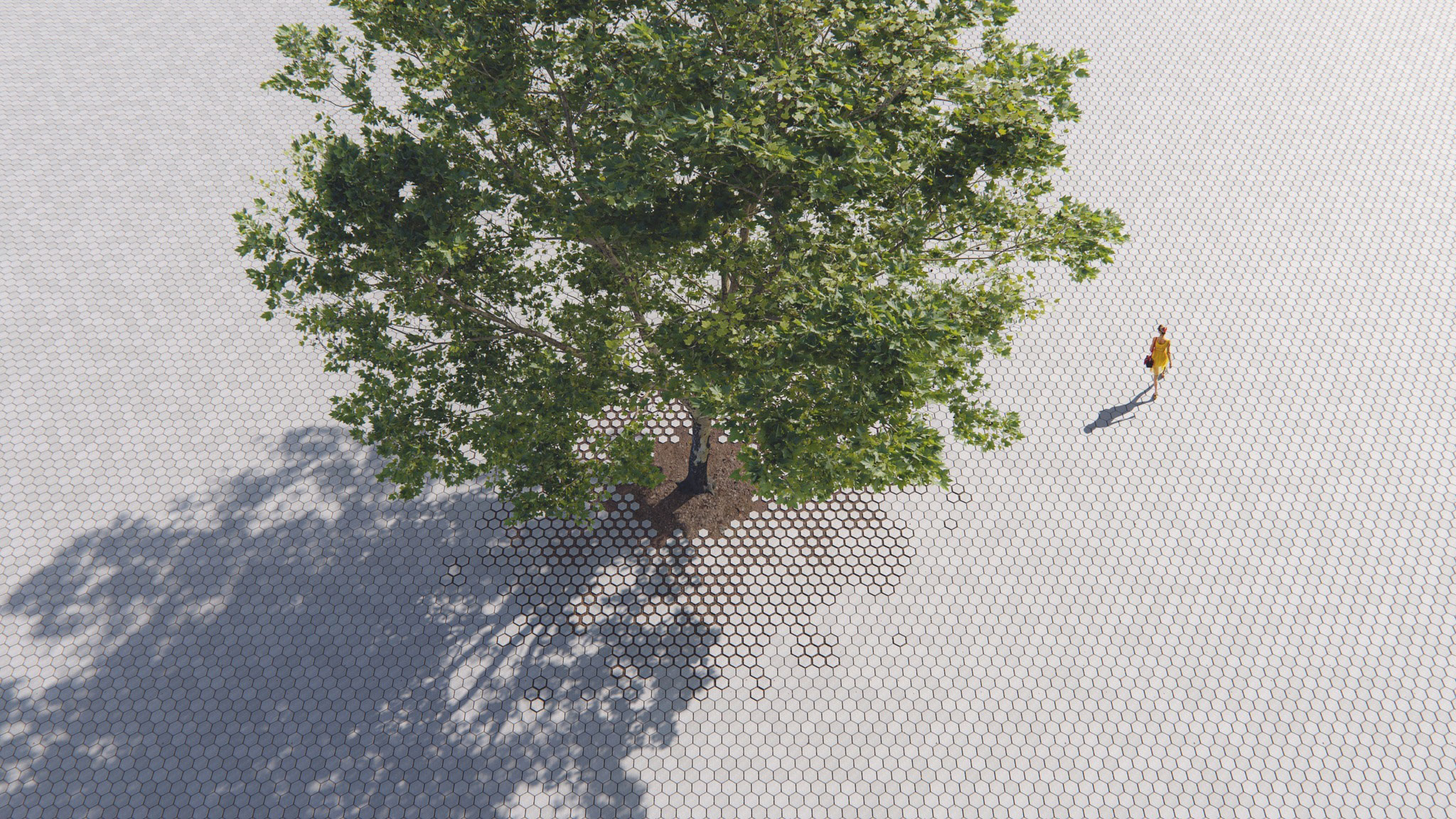The different interlocking spaces between each stone in the paving system vary in the same way that the pieces themselves do, this differentiates this system from others. The variation translates into different soil permeabilities, allowing fluent transitions between various users and needs in the urban landscape.

Asak Flyt permeable pavement system by Snøhetta. Photograph by HISM.
Project description by Snøhetta
Snøhetta has collaborated with Norwegian manufacturer Ask Milijøstein on the design of an outdoor surface to aid water management. Named Asak Flyt, the permeable concrete paver system consists of three hexagonal interlocking unit types that can be combined to "provide landscape architects with another powerful tool for nature-based water management".
The varying sizes of tiles in the Fly system create different interlocking spaces between each stone, allowing for greater control over the extent of permeability through the system. The team estimates that their system allows for up to 28% permeability per square meter of water.

Asak Flyt permeable pavement system by Snøhetta. Photograph by HISM.
The varying spaces between the tiles also create what the team calls a "visually exciting expression", with the intention that the system becomes a design feature in its own right alongside its water management functions.
"Permeable surfaces are part of the increasingly needed category of nature-based water management systems, including green roofs, rain harvest beds, open natural water streams, and similar approaches to managing larger water loads, cloudbursts, and flash floods", Snøhetta said. "The system is a new flexible design tool to program outdoor spaces without compromising their permeable needs to ensure a more sustainable approach in the future".






























